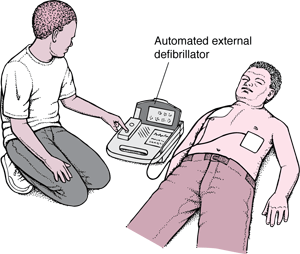Ventricular fibrillation (VF) is an uncontrolled twitching or quivering of the muscle fibers of the lower chambers of your heart. During ventricular fibrillation, blood is no longer pumped out of your heart.
The most common cause of VF is a heart attack. However, VF can also occur whenever the heart does not get enough oxygen or with certain heart disorders.
Conditions that can lead to VF include:
- Heart attack,
- Some heart muscle diseases, called cardiomyopathy,
- Certain arrhythmias,
- Ischemia (lack of oxygen to the heart muscle because of narrowed coronary arteries or shock),
- Sudden cardiac death,
- Electrocution accidents or direct injury to the heart.
Most people with VF have no history of heart disease. However, many have risk factors for cardiovascular disease, such as smoking, high blood pressure, and diabetes.
Symptoms
A person who has a VF episode will suddenly collapse or become unconscious, because the brain has stopped receiving blood from the heart.
Treatment
- Ventricular fibrillation is a medical emergency and must be treated immediately to save a person’s life.
- Call 911 for emergency help.
- Start CPR (cardiopulmonary resuscitation) with mouth-to-mouth breathing and chest compressions.
- If available, use a computer-controlled device called an automatic external defibrillator (AED). AEDs allow a person without medical training to pass a quick electric shock through the chest to change the VF to a normal rhythm. AEDs are available in many public places and on some airplanes.
- Continue CPR until help arrives.
Prevention
An implantable defibrillator can help prevent future VF episodes in some patients. Others may need medicine to control the heartbeat.
Many public places and airplanes now have automated external defibrillators for use in an emergency.
Dr T,



